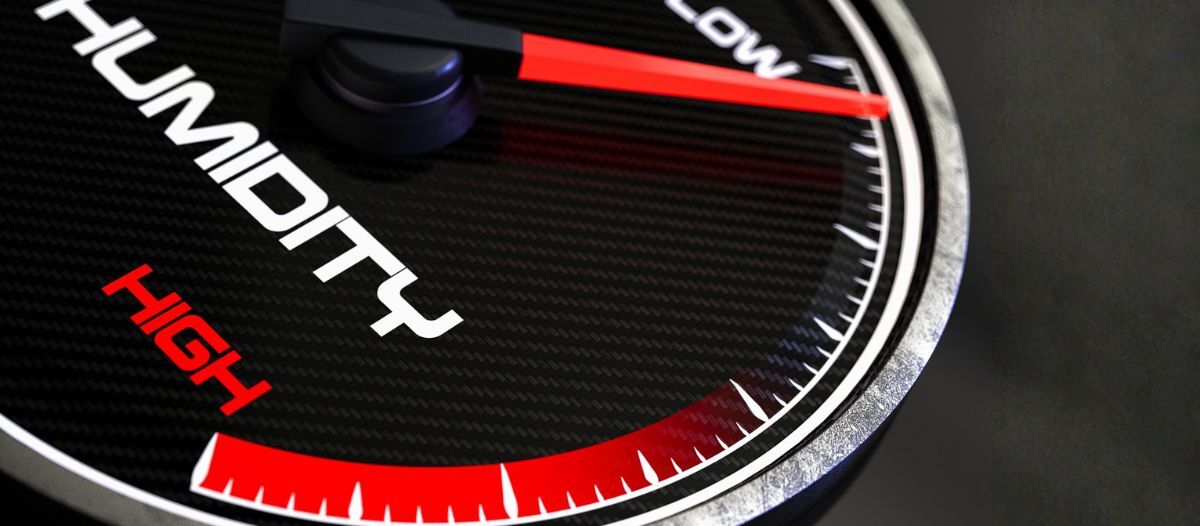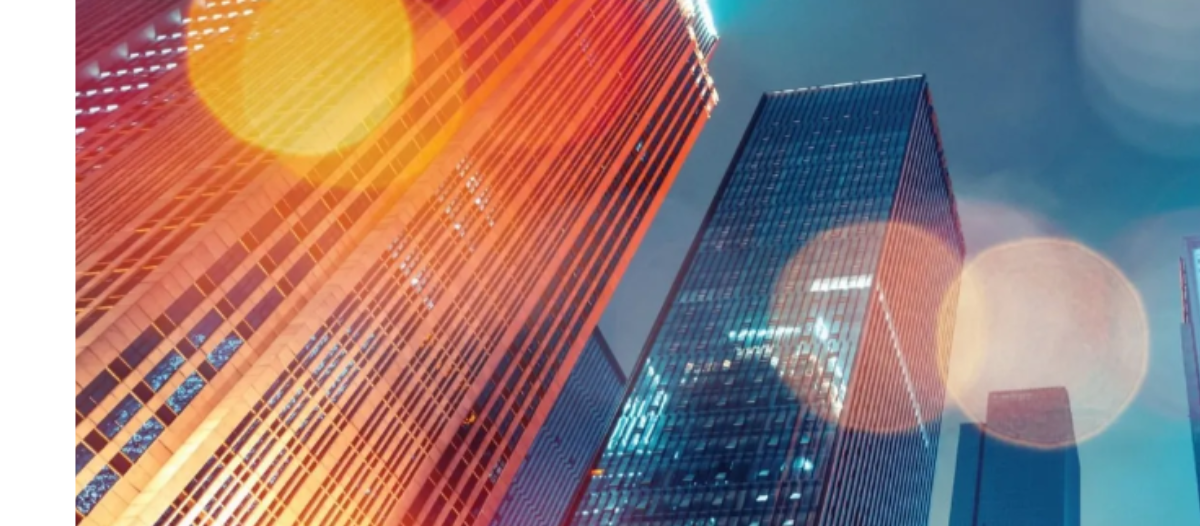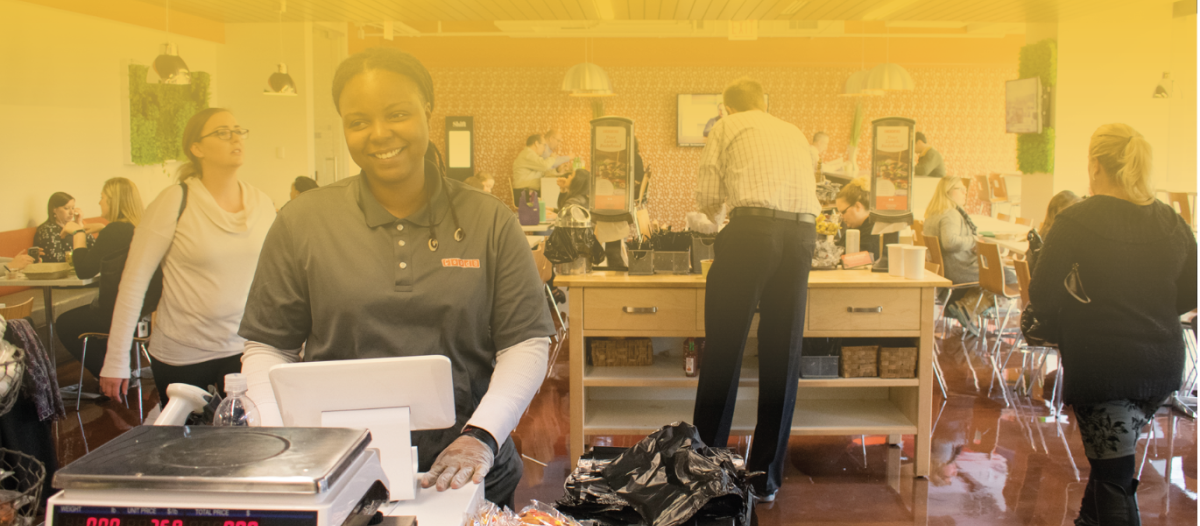Mitigating Costs & Liability
How thermal destratification reduces humidity & mildew

Humidity poses a very serious threat to all types of properties — commercial, residential and public — by creating ideal conditions for mildew and mold, which can be costly to remove. Humidity, mold and mildew can also create exorbitant costs for organizations including damage to equipment, products and facilities, loss of productivity from employees and increased energy costs.
Modern cooling technologies, particularly thermal destratification, are effective in combating humidity-related damage while also delivering cost savings.
A significant source of humidity — thus, mold and mildew — is thermal stratification.
Thermal stratification occurs when there is a juxtaposition of denser (cold) and lighter (warm) air masses. This phenomenon results in the formation of a vertical temperature gradation of air, which is commonly referred to as temperature stratification. In buildings with high ceilings, this temperature disparity between the floor and ceiling can be substantial.
In addition to physical and financial damage from humidity, stratification can lead to other higher costs. Without an effective way to redistribute the warmer ceiling air to the floor, the heating system must produce enough hot air to fill the entire space such that the lowest level of the strata receives sufficient heat for comfort. And because the thermostat is located near the floor, the controls are quite biased to overheat the upper regions of the room. In cooling situations, more air must be chilled to overcome sultry zones.
The colder zones create temperatures highly conducive to humidity and therefore a breeding ground for mold and mildew.
There are a variety of ways in which increased humidity due to thermal stratification can damage a facility:
-
Corrosion of steel trusses, roof decks and fasteners.
-
Condensation on cold roof panels dripping onto machinery, products or electrical gear.
-
Accelerated degradation of insulation as moisture saturated insulation loses R-value and allows mold.
-
Concrete spalling, the decay due to moisture, caused in large part from the corrosion of reinforcing steel.
Humidity and mildew can damage or even ruin equipment and manufactured products, as well as the physical plant of a building. But there are less obvious costs and damages due to the humidity resulting from thermal stratification.
One of the first casualties of human discomfort is productivity. One study from Helsinki showed employee productivity decreasing by more than 10 percent when temperatures rose to 80 F from 72 F. And when mold is added to the equation, illness and irritation from sick building syndrome can increase absenteeism and decrease productivity. One case study by the World Green Building Council found a 58 percent reduction in absenteeism when the indoor air quality of a facility was healthy.
There are costs beyond what is shouldered by individual companies, however. The National Institutes of Health estimates the costs of dampness and mold in the United States alone to be more than US$166 billion. From the study:

That does not include the environmental impact of wasted energy, which adds to the greenhouse gas effect and damages the environment.
Eradicating mold and mildew is a costly proposition. Remediation can cost as much as US$50,000 per instance for commercial properties and as much as US$500,000 for industrial facilities. Those figures do not include the lost productivity from downtime while a facility is shut down or operating at limited capacity during remediation.
Add to that the costs of legal liability and reputational damage. A sick building can cause a flood of medical costs that may end up falling on the facility’s owner or operator. Employees, tenants, customers or other visitors who frequent such a facility could sue, and not only for the cost of the treatment for their related illness, but for damages.
Besides the costs of lost worker output, which can vary significantly from one industry to the next, operational budgets suffer from wasted energy use, shorter HVAC lifespans from excessive use and shorter lifespans from lighting as they cannot dissipate heat.
There are other ways stratification increases building repair and maintenance costs:
-
Wasted energy
In winter, warmer air rises to the top of a structure, leaving cooler air at the ground level where most employees work and where thermostats record the temperature. This causes climate control systems to work longer and use far more energy to cool the occupied space.
On warmer days, the cooler air stays at ground level, but hotter air above can make work uncomfortable for anyone working on mezzanines, upper floors or scaffolding. A common result is to put even more demand on the cooling system.
Buildings account for more than one-third of the world’s energy consumption, and about 30 percent of all that energy is wasted due to inefficiencies.
In a 10-12-meter-high building, (32 to 39 feet) the air temperature at the ceiling can be 10-15 C warmer than at floor level. In taller buildings, the difference can be much more pronounced.
-
Bigger load on HVAC equipment
More operation time can shorten the lifespan of an HVAC system by anywhere from 10 percent to 30 percent. That is significant with large industrial HVAC units costing US$500,000 or more.
Thermal destratification is the process of evenly redistributing the cold, dry air that typically settles near the floor, circulating it throughout the space. This produces a more uniform temperature from floor to ceiling and eliminates cold zones that produce moisture. This not only enhances overall comfort through better temperature regulation but also helps control humidity levels more efficiently.

Regardless of location, season or building type, thermal destratification systems offer a dependable and energy-efficient solution to the challenges posed by humidity. There are a variety of methods for thermal destratification.
-
Simple circulation
The first and most common method is achieved through ceiling fans. Large-diameter, slow-speed fans circulate air gently from ceiling to floor without creating drafts.
Another option is high-velocity destratification fans installed on ceilings or high on walls to push warm air downward and create a more uniform temperature.
Another option is ducted air recirculation in which heating and cooling systems are configured to draw hot ceiling air and redistribute it closer to ground level.
-
Natural convection enhancement
One way to achieve this is through architectural design elements such as open atriums, ventilation shafts, clerestory windows (small openings near a building’s roofline to improve ventilation and illumination while minimizing direct sun exposure or outdoor distractions) and thermal chimneys, which use solar gain or stack effect to move warm air and drawing cooler air to balance layers.
-
HVAC-based systems
Variable air volume systems regulate supply air to different heights or vertical zones to prevent stratification, while air diffusers and jet nozzles encourage air mixing instead of allowing hot or cold air to collect in one area. Another method is return air placement, which pulls return air from higher levels of a building and reintroduces it at floor level to reduce layering.
-
Hybrid & advanced methods
Heat recovery systems capture ceiling heat and redistribute it while smart controls and sensors monitor temperature gradients and automatically activate destratification fans.
Results of destratification
Mixing the air to a more consistent, uniform climate prevents any individual pockets of air from achieving cool enough temperatures required to cause humidity and condensation. This keeps relative humidity lower and more balanced across the whole space while much less water condenses on windows, walls and any other surfaces.
That means the elimination of damp zones, the areas where humidity exceeds 60 percent and are breeding grounds for mold. It also means improving airflow and preventing stagnant, damp corners where mildew gathers.
This leads to energy savings from 20 percent to as much as 50 percent for a particularly tall building. It also reduces carbon emissions, creates a safer and more productive environment for workers and all building inhabitants, and prevents damage to equipment and products.
This also creates a more pleasant, productive environment for workers and other facility users, removes excess moisture evenly and prevents moisture from causing damage to the facility, equipment or products.
The good news for builders and operators of commercial and industrial facilities is that the cost of preventing thermal stratification is modest compared to the cost of cleaning up after it.
Given the high cost and potential legal liabilities of excess moisture, facility managers should review their properties for thermal stratification and the resulting humidity, mold and mildew and consider appropriate mitigation actions. Thermal destratification should be a prime consideration when renovating an existing facility or building a new one.

Richard Halsall serves as the CEO of Exhale Fans. With an eye for technology and a desire to deliver the best in quality, comfort and satisfaction, Halsall has been instrumental in bringing Exhale Fans’ product from conception to fruition, driving the company to unprecedented levels of success, even in its infancy. In 2017, he fully immersed himself in the young company’s pivot into large-scale production. Prior to founding Exhale Fans, Halsall served in the U.S. Army as a Huey Cobra Pilot in Vietnam, as well as a pilot with a major U.S. airline, from which he retired in 2015.
Read more on Real Estate and Risk Management or related topics Occupant Health and Risk Management
Explore All FMJ Topics









